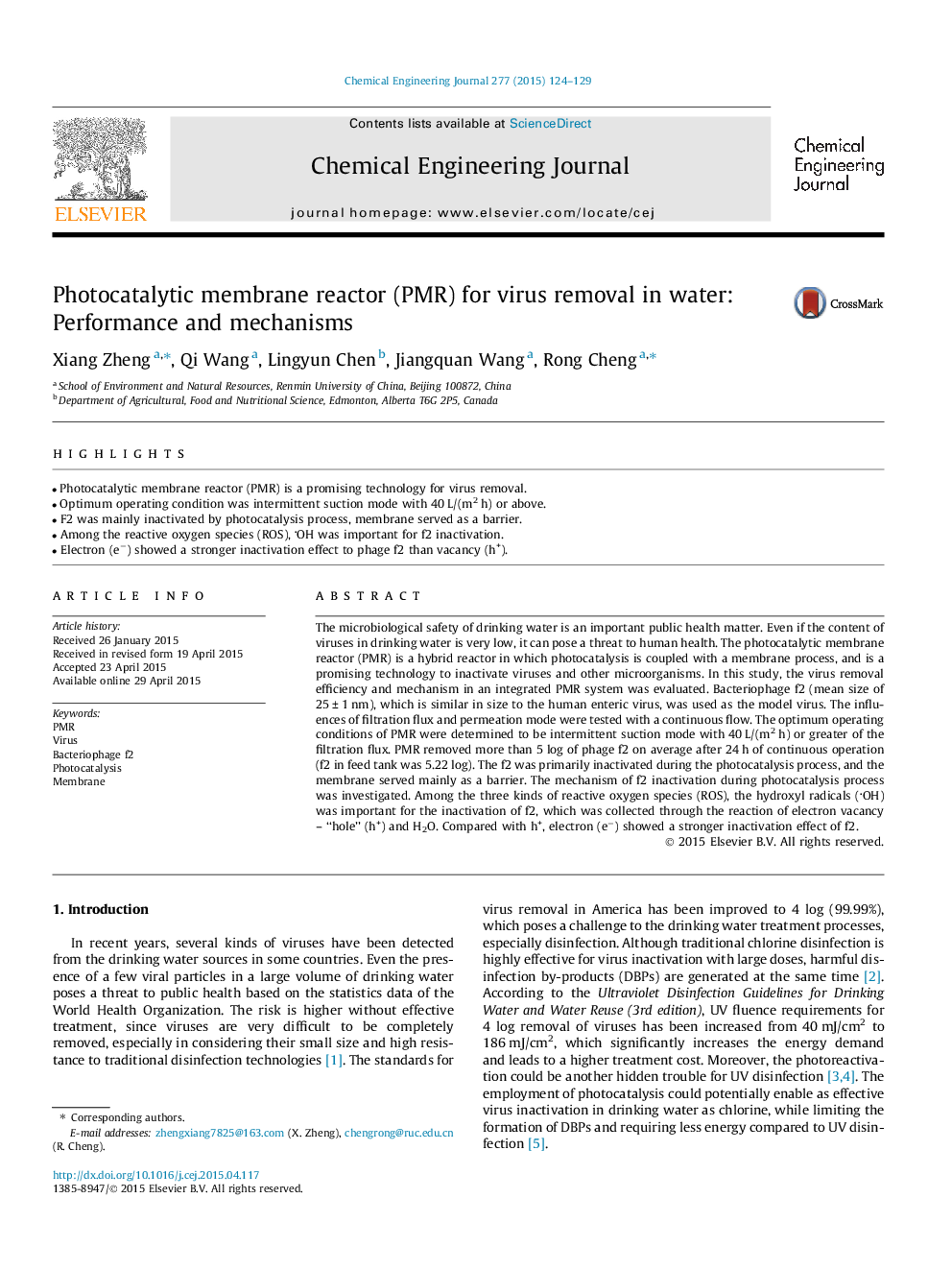| کد مقاله | کد نشریه | سال انتشار | مقاله انگلیسی | نسخه تمام متن |
|---|---|---|---|---|
| 146308 | 456367 | 2015 | 6 صفحه PDF | دانلود رایگان |

• Photocatalytic membrane reactor (PMR) is a promising technology for virus removal.
• Optimum operating condition was intermittent suction mode with 40 L/(m2 h) or above.
• F2 was mainly inactivated by photocatalysis process, membrane served as a barrier.
• Among the reactive oxygen species (ROS), OH was important for f2 inactivation.
• Electron (e−) showed a stronger inactivation effect to phage f2 than vacancy (h+).
The microbiological safety of drinking water is an important public health matter. Even if the content of viruses in drinking water is very low, it can pose a threat to human health. The photocatalytic membrane reactor (PMR) is a hybrid reactor in which photocatalysis is coupled with a membrane process, and is a promising technology to inactivate viruses and other microorganisms. In this study, the virus removal efficiency and mechanism in an integrated PMR system was evaluated. Bacteriophage f2 (mean size of 25 ± 1 nm), which is similar in size to the human enteric virus, was used as the model virus. The influences of filtration flux and permeation mode were tested with a continuous flow. The optimum operating conditions of PMR were determined to be intermittent suction mode with 40 L/(m2 h) or greater of the filtration flux. PMR removed more than 5 log of phage f2 on average after 24 h of continuous operation (f2 in feed tank was 5.22 log). The f2 was primarily inactivated during the photocatalysis process, and the membrane served mainly as a barrier. The mechanism of f2 inactivation during photocatalysis process was investigated. Among the three kinds of reactive oxygen species (ROS), the hydroxyl radicals (OH) was important for the inactivation of f2, which was collected through the reaction of electron vacancy – “hole” (h+) and H2O. Compared with h+, electron (e−) showed a stronger inactivation effect of f2.
Journal: Chemical Engineering Journal - Volume 277, 1 October 2015, Pages 124–129